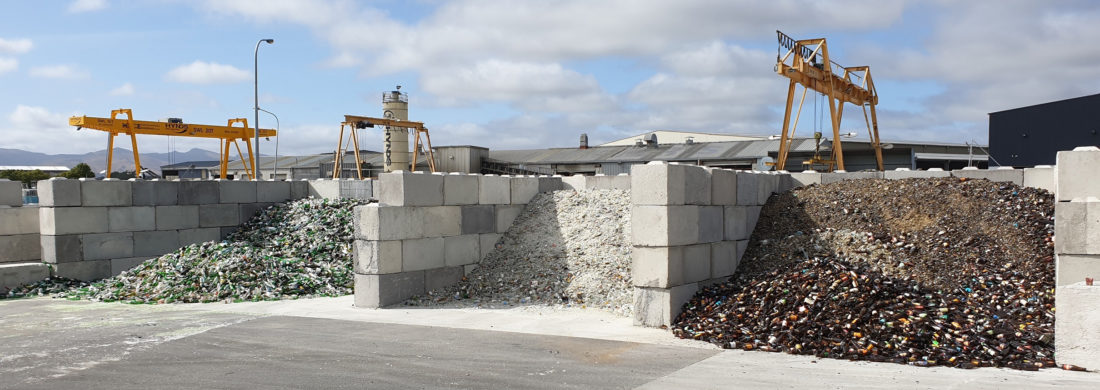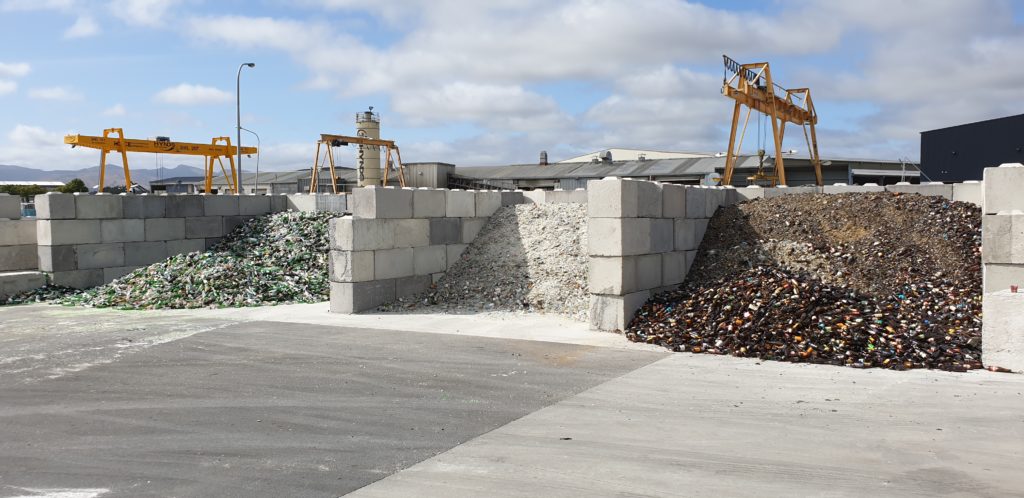
Grant keeps South Island glass recycling on the up

South Island glass recycling has been given a boost after the Glass Packaging Forum helped upgrade the 5R Solutions hub in Christchurch.
The Forum funded a grant of just over $11,500 for the construction of storage bunkers at 5R Solution’s new glass recovery facility in Hornby, which opened in January. 5R Managing Director Chris Grant explains the facility was built in response to the increase in glass being recovered in the South Island.
“With the back of the old facility broken from a logistic management perspective it was imperative that we hit our peak season in the new facility. It is thanks to the GPF in approving the bunker blocks that enabled 5R to have a smooth transition from old to new facility,” Chris says.
“The 5R team are excited to have this new facility operational with our increasing demand to push recycled glass to the North Island.”
Glass Packaging Forum Scheme Manager Dominic Salmon says 5R plays a crucial role as a hub for aggregating glass bottles and jars collected from Canterbury, Otago and the West Coast. “Sending glass to a hub so it can be transported in bulk to Auckland to be recycled makes transport much more efficient and cost-effective, which means we can recycle more glass,” he says.
The grant will ensure 5R can store hundreds of tonnes of colour-sorted glass (green, brown and clear) as well as mixed glass, Dominic says.
“Queenstown Lakes District Council implemented a new kerbside glass collection service in July last year in Queenstown and Wanaka, which is expected to divert nearly 2000 tonnes of glass from landfill annually. The bunkers are crucial for storing and processing this glass so it’s quality as a recyclable material is maintained,” he says.
Glass recycling in the South Island has been on the up in recent years, with latest figures showing 23,836 tonnes of glass made its way to Auckland for recycling in 2018. This was up 10,399 tonnes from 2016, Dominic says. “As more South Island councils move to the best practice of separate glass collections at kerbside, then we only expect to see this upward trend continue.”
The GPF has funded over $220,000 in grants in the past two years for projects in the South Island which improve glass recovery. “The South Island faces unique challenges in terms of collecting and transporting recycled glass, but we have seen investment in key projects make a big impact,” Dominic says.
Improving glass recycling is the core function of the GPF, which runs the country’s only Government-accredited, voluntary product stewardship scheme for glass bottles and jars, Dominic says.
The GPF has to date funded over $3.4 million in grants for projects ranging from infrastructure to public place recycling, events, and research. This funding is sourced through the GPF’s product stewardship scheme, which has 100 member brands that pay a voluntary levy based on the amount of glass they put to market.
Glass is recycled at the country’s only glass container manufacturer O-I New Zealand.
Glass going to landfill is huge waste of valuable resources as it can be infinitely recycled in New Zealand, Dominic says. It’s also one of the most sustainable packaging materials.
Using recycled glass to make new glass bottles and jars reduces the need for virgin material – in fact, 1kg of recycled glass replaces 1.2kg of virgin materials. It also means the furnaces can run at a lower temperature so there are less emissions, Dominic says. According to the latest information from O-I, every 10 percent of recycled glass content reduces emissions by 5 percent and generates energy savings of approximately 3 percent.
“A great little statistic we’d love people to keep in mind when doing their recycling is that the energy saved by recycling a single bottle could light a 15-watt low-energy light bulb for 24 hours,” Dominic says.


